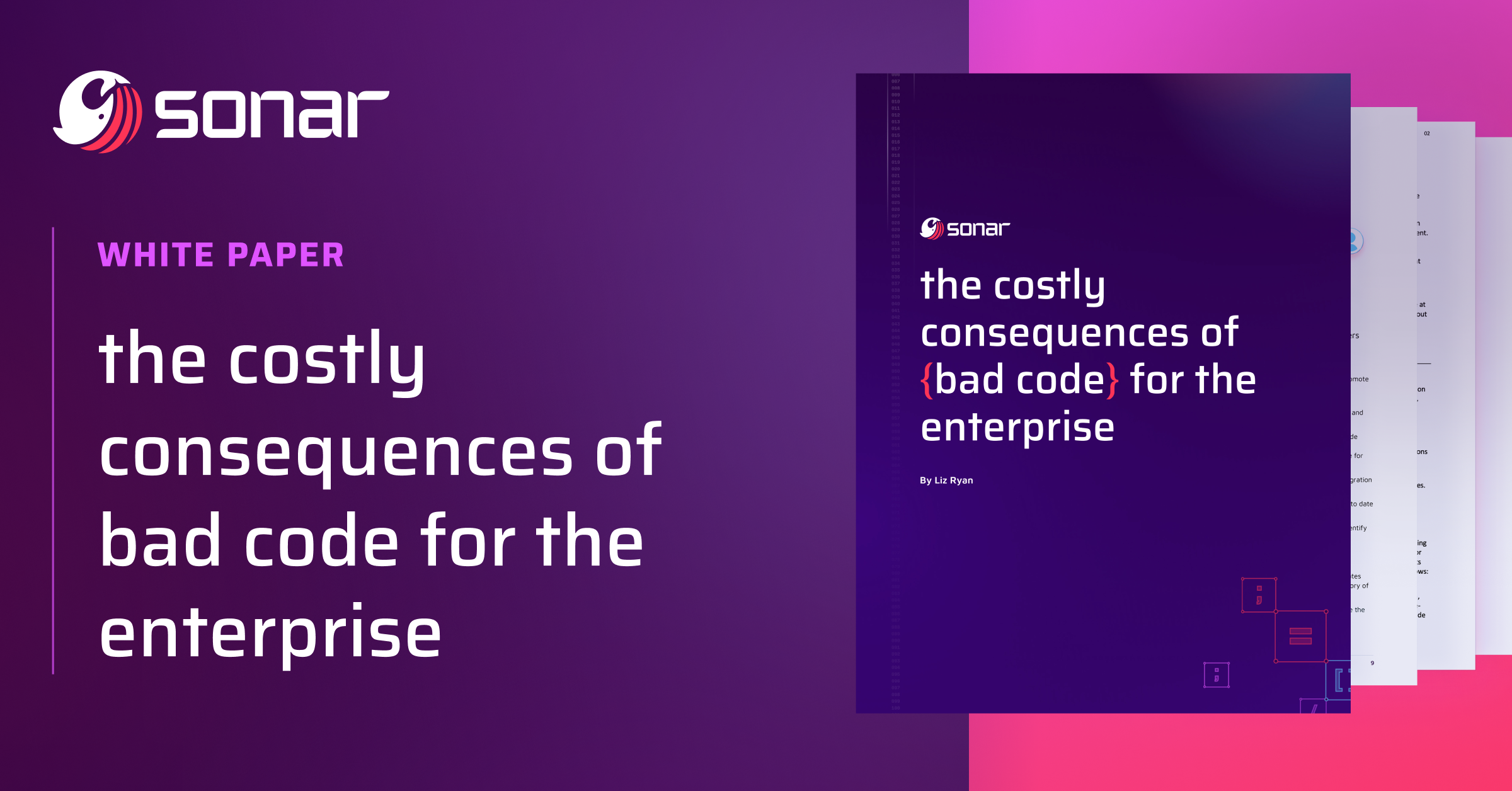Since the birth of computer software, the costs associated with correcting its issues have been studied. From Barry Boehm’s 1981 study that found that finding and fixing a software issue after delivery can be 100 times more expensive than addressing it earlier, to over 20 years later, when The National Institue of Standards & Technology (NIST) said it can cost 30 times more after delivery, the costs of this ‘bad code’ continue to challenge the software industry. Code is written by humans, after all, and humans make mistakes.
There are also countless examples of the costs of bad code throughout recent history. Not only does it cost companies millions of dollars, but countless hours of lost time, productivity, and brand reputation too. As we explore the consequences of bad code, the layers that underpin the codebases of software that shape our digital world come into focus. The reasons that bad code exists everywhere are just as complex as the evolving landscape of software development.
What is Bad Code?
Bad code stifles software functionality. It isn't just about syntax errors or small bugs; it goes deeper, encompassing a range of issues that impede software’s readability, maintainability, and scalability. It's code that's complicated, poorly structured, or lacks documentation. Bad code can also manifest as overly complex solutions to simple problems, code duplication, or excessive dependencies.
The origins of bad code are diverse, stemming from the pressures of fast-paced deadlines, a lack of coding knowledge, manual issue remediation, inconsistent coding styles, and the unrelenting demands that outpace software performance. Even the advent of AI coding assistants, while promising efficiency, introduces its own set of challenges, including buggy and insecure code.
Bad code’s far-reaching impact
The repercussions of bad code extend far beyond the lines written on a screen. It affects the entire development cycle:
- Reduced Maintainability and Scalability: Bad code tends to be difficult to understand. As a result, maintaining, extending, or modifying it becomes an arduous task. It lacks scalability, making it challenging to adapt to changing business needs or incorporate new features.
- Increased Bug Count and Technical Debt: Bad code is a breeding ground for bugs. It harbors hidden issues that surface unexpectedly, leading to system failures or malfunctions. The accumulation of unresolved issues creates technical debt, requiring more effort and resources to rectify over time.
- Decreased Productivity and Efficiency: Developers spend a considerable amount of time deciphering and fixing bad code. This reduces their productivity, preventing them from focusing on innovation or creating new functionalities. As a result, the entire development process slows, causing missed deadlines and stalling project progress.
- Increased Costs and Risks: The impacts of bad code accumulate over time, resulting in increased costs for software maintenance, bug fixing, potential rework, and addressing technical debt. Moreover, bad code poses risks to the reliability, security, and stability of the software, potentially leading to reputation damage or compliance issues.
Addressing bad code promptly through refactoring, code reviews, and adherence to coding standards can mitigate these impacts, fostering a healthier development environment and enhancing the overall quality of software products.
The Quest for Perfection
In the realm of software development, perfection might seem elusive. But the pursuit of cleaner, more efficient code is an ongoing journey. It requires diligence, collaboration, and a commitment to continuous improvement.
By acknowledging the existence of bad code and implementing proactive measures to mitigate its impact, developers and organizations can steer software toward success. After all, the true beauty of code lies not just in its functionality but also in its elegance and maintainability.
Want to learn more about how to overcome the costs of bad code? Check out the white paper here.


